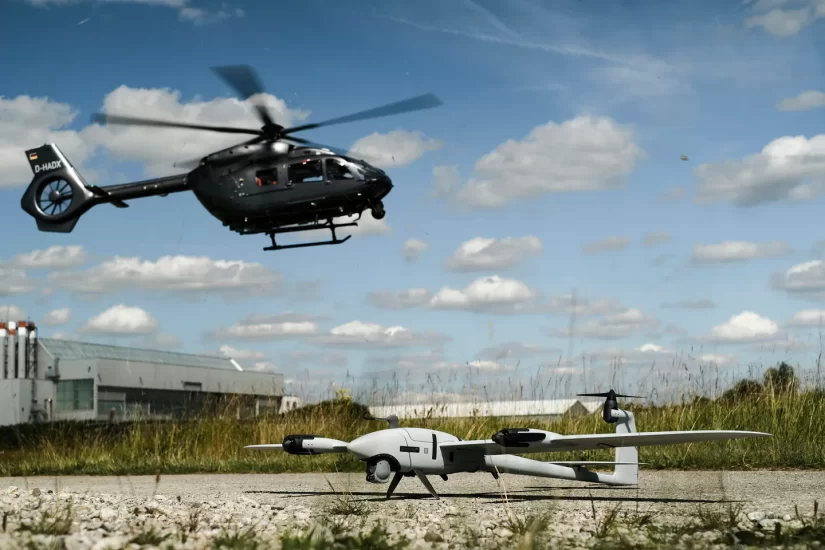Airbus is using its H145M helicopter as a flying ‘lab’ for military applications, including manned and unmanned teaming (MUM-T) activities.
“Imagine two launchers on the helicopter, each with several tubes in which you can theoretically put a drone in each of them. That means you could launch many drones nearly parallel or in a very short sequence.” H145M programme manager Constance Pinsdorf explains.
Testing whether the helicopter crew could control a drone in flight began in 2018. The team found this was possible but would have required additional crew. MUM-T necessitates the crew keep track of the drone and therefore cockpit interfaces must help the pilots handle this second ‘mission’. Consequently, the H145M underwent a cockpit redesign, getting a new 17-inch display dedicated to drone operation. A slightly modified version was introduced for the H145 for civil applications.
For the drone to carry out a mission largely independently once the crew has given it a command, Airbus Helicopters sought the support of software startup HAT.tec for task-based guidance.
In 2022, the H145M took part in a fictional combat demonstration as part of the future combat air system project. In concert with a jet and several real uncrewed remote carriers, the H145M’s crew took control of one of these remote carriers, and with it, its live video stream.
The aim is to have platform-agnostic teaming capabilities but if an operator selects a certain kind of drone, the same capability must ultimately equip the helicopter.
What about several drones, all launched from the helicopter? Research into air-launched effects dominates much of the team’s focus. Here, too, the H145M works as a lab, already equipped with a launcher system which might possibly be reused.
The project’s next steps hinge on finding a strong partner for the drone equipment, and on meeting with operators for their input.
For more information




